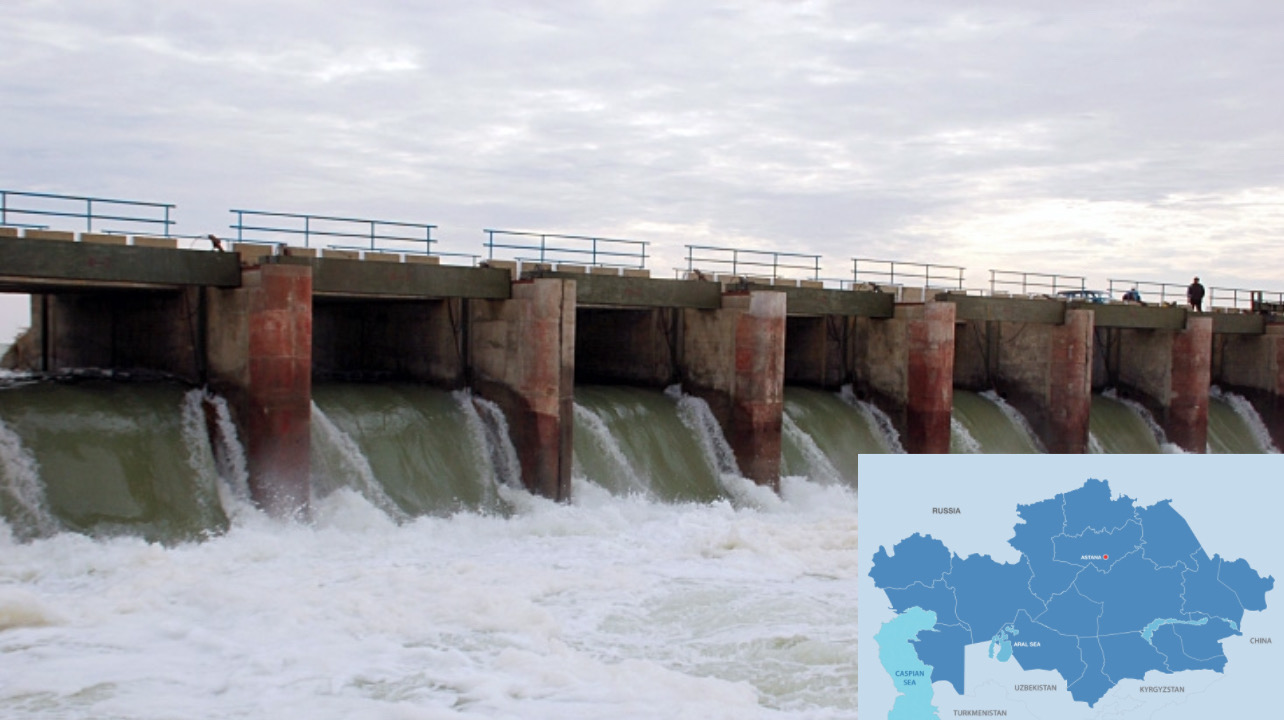ASTANA – Since the start of this year, the water level in the Aral Sea has increased by nearly 1.5 billion cubic meters, rising to 95 centimeters for the first time in many years, Khabar TV reported on May 14.

Kokaral Dam. Photo credit: Brigitte Brefort/World Bank. Click to see the map in full size. The map is designed by The Astana Times.
According to the Aral-Syrdarya Basin Inspectorate, the water level has been decreasing for the last 12 years, falling from 27 to 18 billion cubic meters. Now the situation has improved, as 90% of the Kyzylorda Region’s 200 large and small lakes have been filled, and thousands of hectares of farms and pastures have been irrigated.
The Aral Sea, formerly the world’s fourth largest lake, known for its rich natural reserves, has been drying up for decades. Satellite images revealed that the water level has decreased 40-fold in the past five decades.
The lake is divided into two parts: the large Aral in the territory of Uzbekistan and the small Aral in Kazakhstan. Two transboundary rivers, the Syr Darya and Amu Darya, flow into the Aral Sea. The Syr Darya River originates in the highlands of the Kyrgyz Republic. It flows through Uzbekistan, Tajikistan, and Kazakhstan, with the Kyzylorda Region as its final destination.
Daniyar Sagadiyev, deputy director of the transboundary rivers department at the Ministry of Ecology and Natural Resources, explained that cooperation with neighboring countries along the Syr Darya is carried out as part of the Interstate Water Coordination Commission.
“Water in our country is mainly used by cotton producers in the Turkistan Region and rice growers in the Kyzylorda Region. Soil moisture deficit forces farmers to switch to profit-proven technologies. Farmers in Kyzylorda began to plant less moisture-intensive crops,” said Serik Kozhaniyazov, first deputy akim (governor) of the Kyzylorda Region. Only two out of the 24 rural areas in the Aral district were engaged in agriculture, cultivating 200 hectares of fields.
This year, the Kyzylorda Region has restored soil moisture almost from scratch.
Farmers mainly plant alfalfa, or lucerne, (cultivated as an important forage crop). Marat Saparov, a resident of the Amanotkel village, sewed a small field with alfalfa and potatoes, hoping for a good harvest. He used to be a fisherman, but had to switch to farming due to the Aral Sea desiccation.
Nevertheless, fishing remains the primary source of income for around 70% of the Amanotkel villagers. The Aral Sea currently has 15 species of fish, with an annual catch limit of approximately 7,000 tons.
The repair of the Kokaral dam is also expected to contribute to successful fishing. Around 450 meters of the dam required urgent modernization for several years. Last year, half a billion tenge ($1.1 million) was allocated under the second phase of the Regulation of the Syr Darya River and Preservation of the Northern Part of the Aral Sea project. Repairs on the dam have already begun.
In addition, two canals from Lake Karashalan and one more branch from the Saryteren Canal will be built to reduce the salinity of the water. As noted by experts, desalination will increase the population of commercial and valuable fish species both in the Aral Sea and in the system of lakes surrounding it, which will result in the growth of fish production in the coming years.
In its efforts to rejuvenate the Aral Sea and its ecosystem, Kazakhstan is working closely with partners from the European Union, USAID, World Bank and other international organizations.

